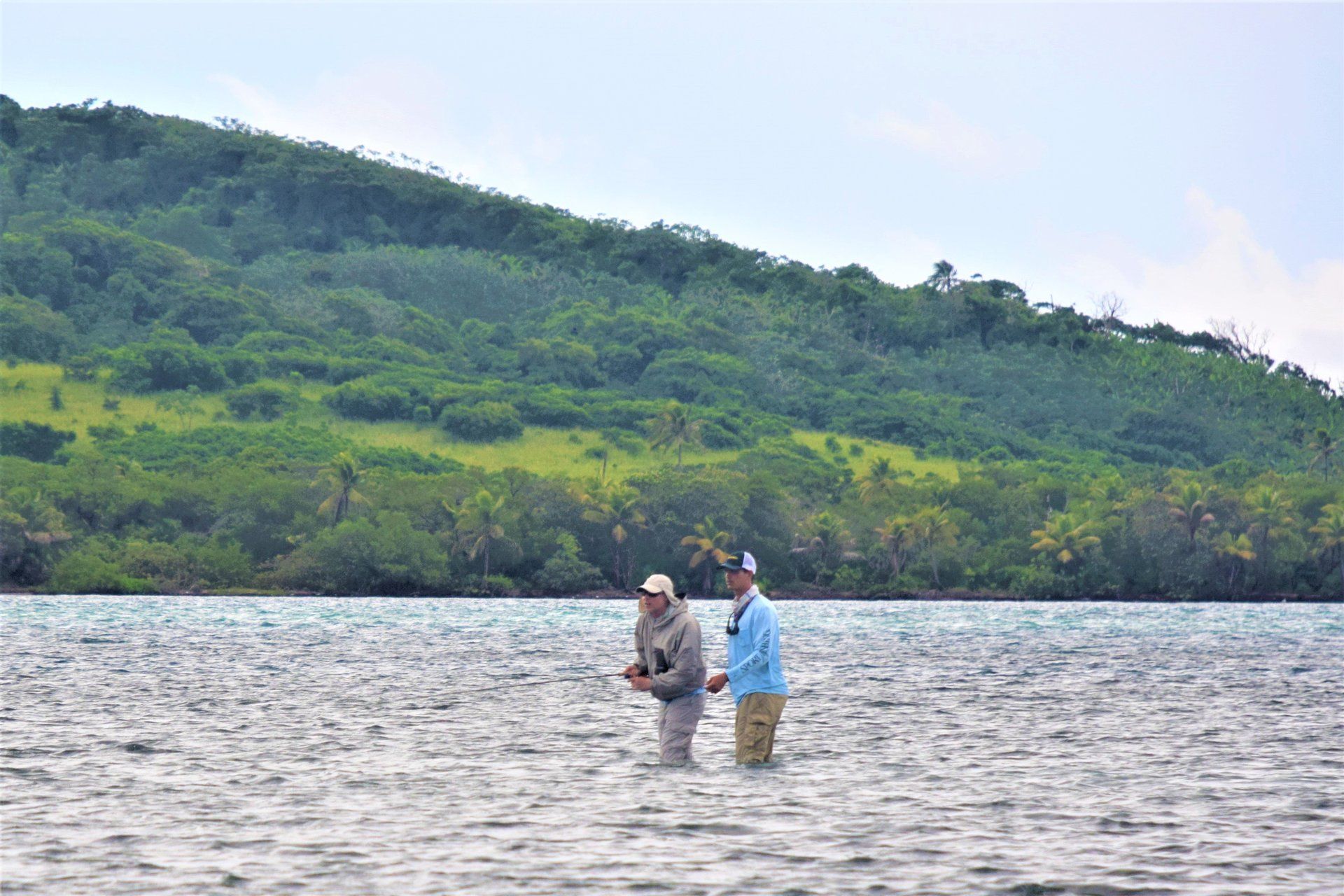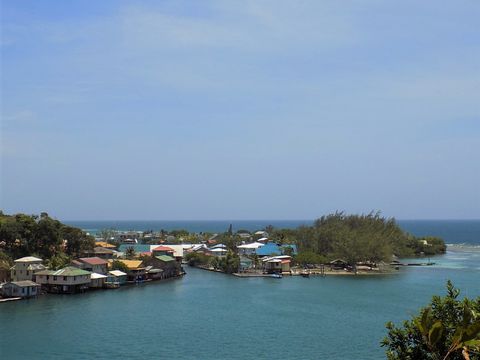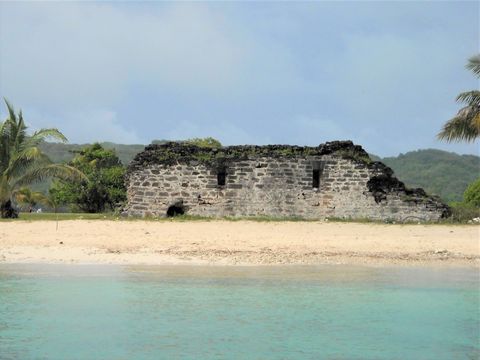
Roatan, Honduras

Roatan, the largest of Honduras' Caribbean Bay Islands, is located 65 kilometres (40 miles) off the northern coast of Honduras. Coxen Hole, located in the southwest, is the largest city on the island of Roatan, and the capital of the Bay Islands, Honduras, with a population of approximately 10,500. It is also the location of the island's Juan Manuel Gálvez International Airport. Geographically, Roatan is located in the Caribbean Sea near the Mesoamerican Barrier Reef.
With a population of approximately 45,000 people, the island is approximately 59 kilometres (37 miles) long and eight kilometres (five miles) across at its widest point. The island rests on an exposed ancient coral reef, rising to about 270 metres (890 feet) above sea level. The island consists of two municipalities: José Santos Guardiola in the east and Roatan and the Cayos Cochinos, further south in the west. Most habitation is in the western half of the island.
In the southwest is busy West Bay Beach, with a coral reef near the shore. Cruise ships dock in the capital of Coxen Hole and nearby Mahogany Bay. To the east are smaller settlements, including the Garifuna village of Punta Gorda.
Roatan's history was especially colourful throughout European colonial times, as the Bay of Honduras attracted an array of individual settlers, pirates, traders and military forces. Various economic activities were engaged in and political struggles played out between European powers, chiefly Britain and Spain. Sea travelers frequently stopped over at Roatan and the other Bay Islands as resting points. On several occasions, the islands were subject to military occupation. In contesting with the Spanish for colonization of the Caribbean, the English occupied the Bay Islands on and off between 1550 and 1700. During this time, buccaneers found the vacated, mostly unprotected islands a haven for safe harbour and transport. English, French and Dutch pirates established settlements on the islands, They frequently raided the Spanish treasure ships carrying gold and silver from the New World to Spain.
The majority of the early permanent population of Roatan originated from the Cayman Islands near Jamaica. Former slaveholders started to arrive in the 1830s shortly after Britain's abolition of slavery in 1838. Former slaveholders from the Cayman Islands were among the first to settle in the seaside locations throughout primarily western Roatan. During the late 1830s and 1840s, former slaves also migrated from the Cayman Islands. Altogether, the former Cayman peoples became the largest cultural group on the island.
In the latter half of the 19th and 20th centuries, the island population grew steadily and established new settlements all over Roatan and the Bay Islands. Settlers came from all over the world and played a significant part in shaping the cultural landscape of the island.
English is the first language of native islanders with Spanish spoken second, whereas mainland Honduras is Spanish-speaking. It remains this way because of the island' past as a British colony. With the steady influx of mainland Hondurans migrating to the islands, Spanish language use has increased. However, because of the tourism and cruise ship industry that supports the islands' economy, English continues to be the dominant language among all native island peoples.
Located near the Mesoamerican Barrier Reef, the largest barrier reef in the Caribbean Sea (second largest worldwide after Australia's Great Barrier Reef). Roatan has become an important cruise ship, scuba diving and eco-tourism destination in Honduras. Tourism is its most important economic sector, though commercial fishing is also an important source of income for islanders.
Aside from the stunning variety of marine life, Roatan's above surface flora and fauna is also fascinating. You will find approximately 120 species of birds on Roatan, of these only about 40 species live and nest on the island, the rest are migratory. The yellow-nape parrot is one of the more famous resident species as it is listed as an endangered species in Honduras. In addition, several species of hummingbirds, golden-fronted woodpeckers, osprey and the great-tailed grackle are regularly seen.
Of the migratory bird's, warblers, vireos and tanagers are the most common along with a variety of Caribbean Sea birds such as the white ibis, brown pelican, frigate bird and the roseate tern. Only about twelve mammal species inhabit the island, including endangered species of sea turtles such as the hawksbill. Six species of frogs are found, 15 lizard species and 13 snake species, with the only poisonous species being the coral snake.
The islands' warm temperature and heavy rainfall support a wide variety of plant life within tropical forests. Fruit tree species such as hog plum, nance and strangler fig are present. Bromelaids, ferns, orchids and palms are also common. A variety of plants, including coconut palms fringe the islands tropical beaches. Coco plums, sea grapes, almond trees and a variety of vines and bright flowering plants add to the colour and attractiveness of the island's beaches.
Mangrove forests are found throughout the island and play an important role in protecting the coastal areas from storm and hurricane damage. Mangroves are also important breeding grounds for the diverse marine life. red, black, white and buttonwood mangroves are the four common species of mangrove found. Besides the mangroves and extensive flats which teem with fish that anglers seek, there is also a chain of coral reefs just off shore where undisturbed, undamaged coral abounds.
All of the reef systems throughout the Bay Islands are protected by both local and central government legislation. Environmental protection is also provided through the efforts of the Roatan Marine Park, a grassroots, community-based, non-profit organization led by a team of professional divers, marine biologists and oceanographers, located on Roatan and focused on the long-term health of Roatan's fragile coral reef and the prevention of over exploitation through unsustainable fishing practices. Over time, the organization has expanded the scope of their environmental efforts through the addition of other programs to protect Roatan's natural resources, including patrols and infrastructure, education, conservation and public awareness.

Roatan

Roatan



